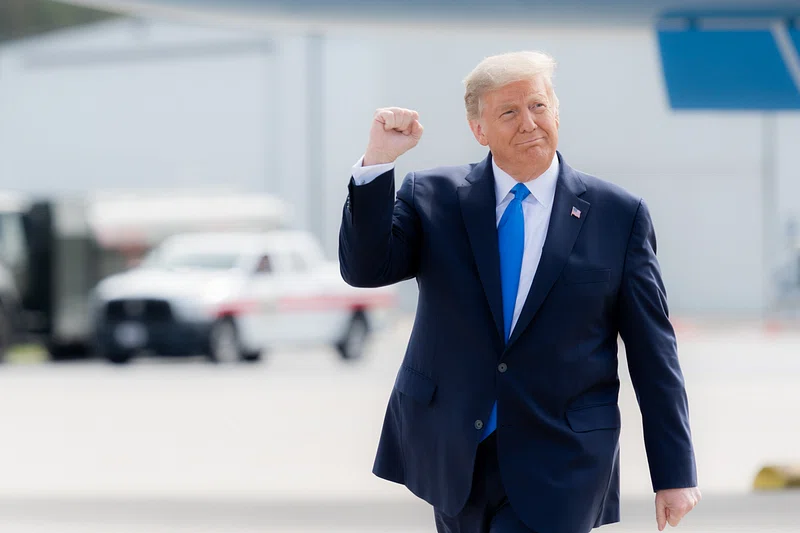
Donald Trump’s 2024 presidential election victory marked a significant political shift, driven by a combination of strategic campaigning, issue dynamics, and demographic trends. Here’s an analysis:
- Economic and Social Concerns: Many voters were very dissatisfied with economic condition that was going on in America despite improvements in inflation and wages under the Biden administration. Persistent high prices, expensive housing, and immigration issues heavily influenced public opinion. Voters trusted Trump more on these matters, while Harris struggled to distance herself from the perceived shortcomings of the Biden presidency.
- Demographic Shifts: Trump made unprecedented gains among Latino and Black voters, particularly men. His share of the Latino vote rose to 46%, the highest for a Republican in decades. Additionally, white voters constituted a larger share of the electorate compared to 2020, bolstering Republican support. Meanwhile, Kamala Harris failed to significantly expand support among women, a key Democratic base.
- Strategic Messaging: Trump’s campaign focused on polarizing cultural issues, such as transgender rights and abortion. By moderating his stance on abortion to support state-level decisions, he avoided alienating moderate voters while retaining strong evangelical support. His outreach through nontraditional platforms, like podcasts, helped connect with younger male voters.
- Expanded Coalition: Trump unified Republican voters, securing 94% of their votes, while reducing Democratic support among independents. His campaign shifted resources away from traditional organizing, relying instead on external groups for voter mobilization.
- Harris’s Challenges: Harris, running as the first female president, faced hurdles. Her focus on abortion rights resonated but was insufficient to counterbalance Trump’s economic and immigration messaging. Her inability to appeal to a broader range of voters, including younger men and certain minority groups, weakened her campaign.
Ultimately, Trump’s combination of demographic gains, issue-driven campaigning, and strategic resource allocation led to a decisive victory, including a rare Republican win of the popular vote.
1. Key Issue Landscape:
- Economic Anxiety: While inflation had improved, many voters remained dissatisfied with the lingering high costs of essentials like housing and borrowing due to interest rate hikes. These economic concerns were heavily blamed on the Biden administration, which Harris struggled to separate herself from.
- Immigration Concerns: The Biden-Harris administration faced criticism for its handling of border crossings, a topic where Trump’s hardline policies found renewed support.
2. Shifts in Demographics:
- Latino and Black Support: Trump significantly increased his vote share among Latino and Black voters, particularly men. For example, he captured 46% of Latino votes, the highest for a Republican candidate in recent history, and saw Black male support rise to 20%, a notable improvement.
- White Voter Influence: White voters, traditionally a Republican stronghold, became a larger proportion of the electorate compared to previous elections. This helped offset Democratic gains among other minority groups.
3. Strategic Campaign Decisions:
- Cultural Focus: Trump capitalized on polarizing cultural issues, using them to energize his base. Negative advertising targeted Harris’s positions on issues like transgender rights, framing her as out of touch with mainstream voters.
- Abortion Stance: By supporting state-level decisions on abortion rather than endorsing a national ban, Trump balanced appeasing moderates and maintaining his core evangelical support.
4. Voter Turnout and Party Unity:
- Republican Consolidation: Trump secured 94% of Republican votes, demonstrating strong party unity. He also reduced the Democratic lead among independents.
- Democratic Challenges: Harris failed to make rally a broader coalition. Despite winning among women, her support levels among younger voters and minorities were insufficient to counterbalance Trump’s gains.
5. Media and Outreach:
- Nontraditional Media Engagement: Trump was able to effectively reached younger and independent voters through platforms like podcasts, bypassing traditional campaign methods.
- Grassroots Efforts: While Harris relied on a strong ground game, Trump’s campaign strategically outsourced voter mobilization to supporting organizations, proving more cost-effective and efficient.
6. Historical Significance:
- Popular Vote Victory: Unlike his previous runs, Trump won the popular vote, signaling a broader shift in support. His success also solidified Republican control in the Senate and likely an expanded House majority.
Trump’s win reflects broader dissatisfaction with the current administration and showcases his ability to build a cross-demographic coalition, signaling a potential realignment in U.S. politics